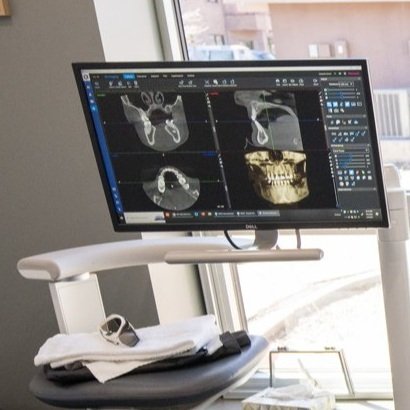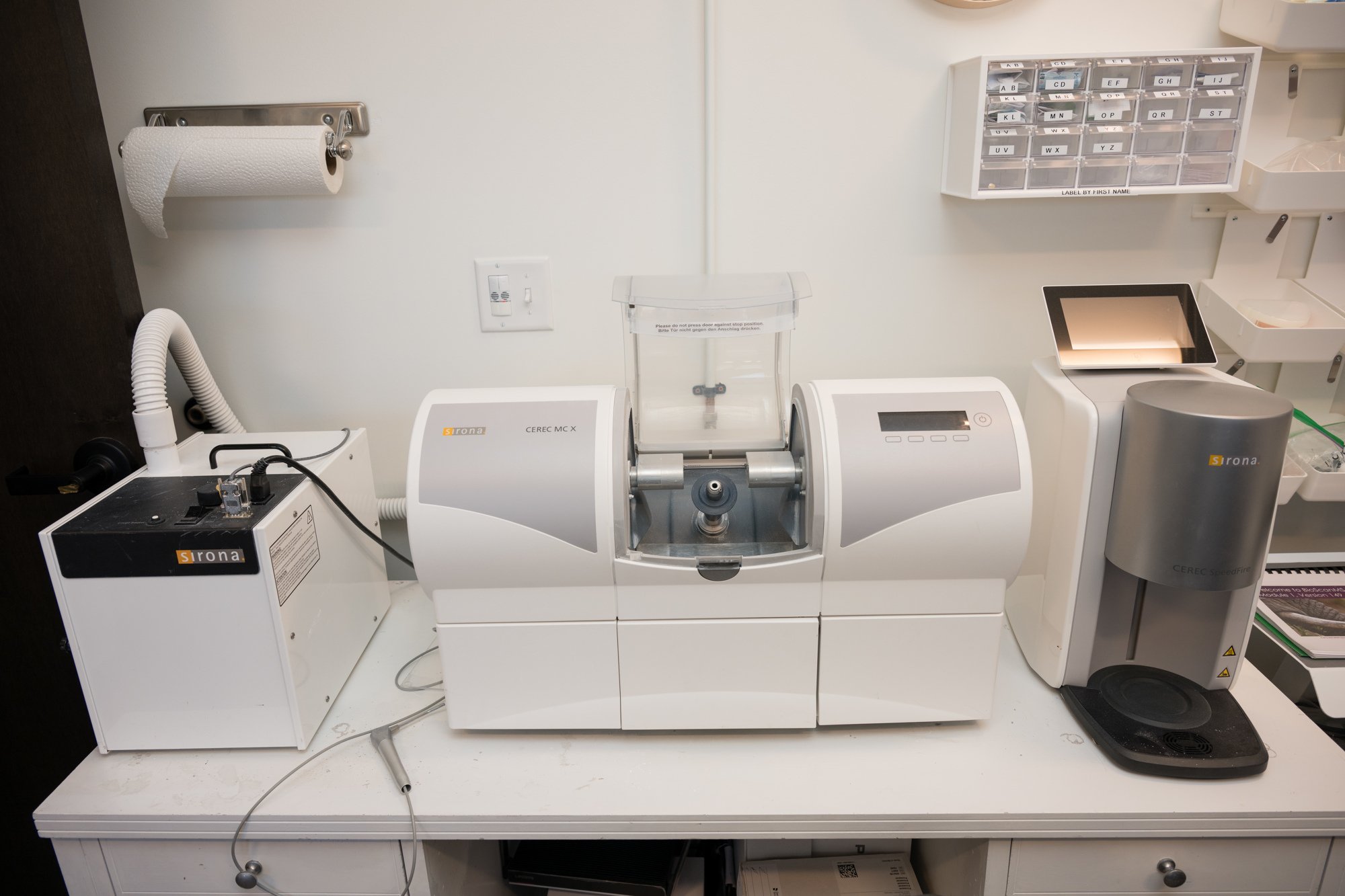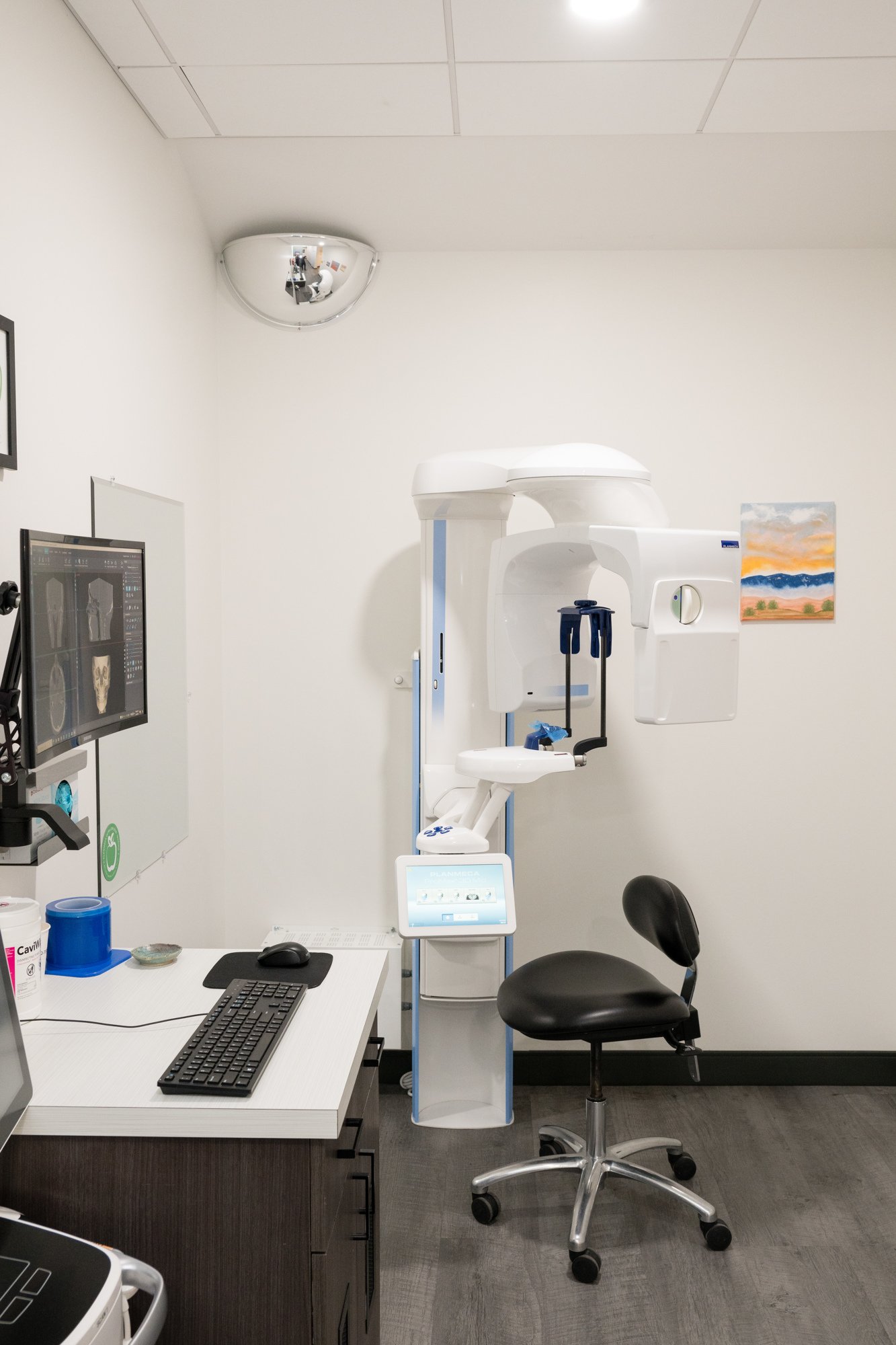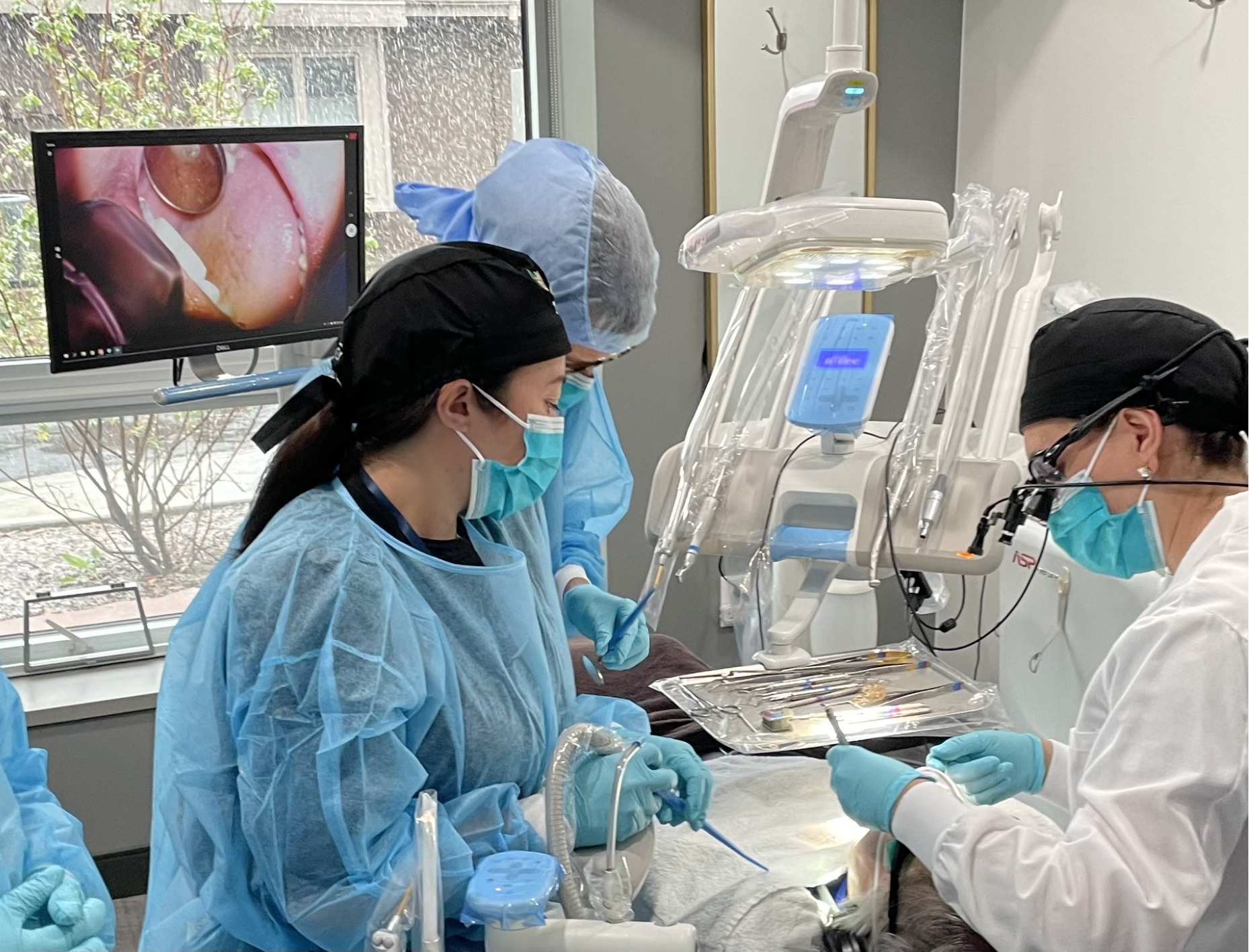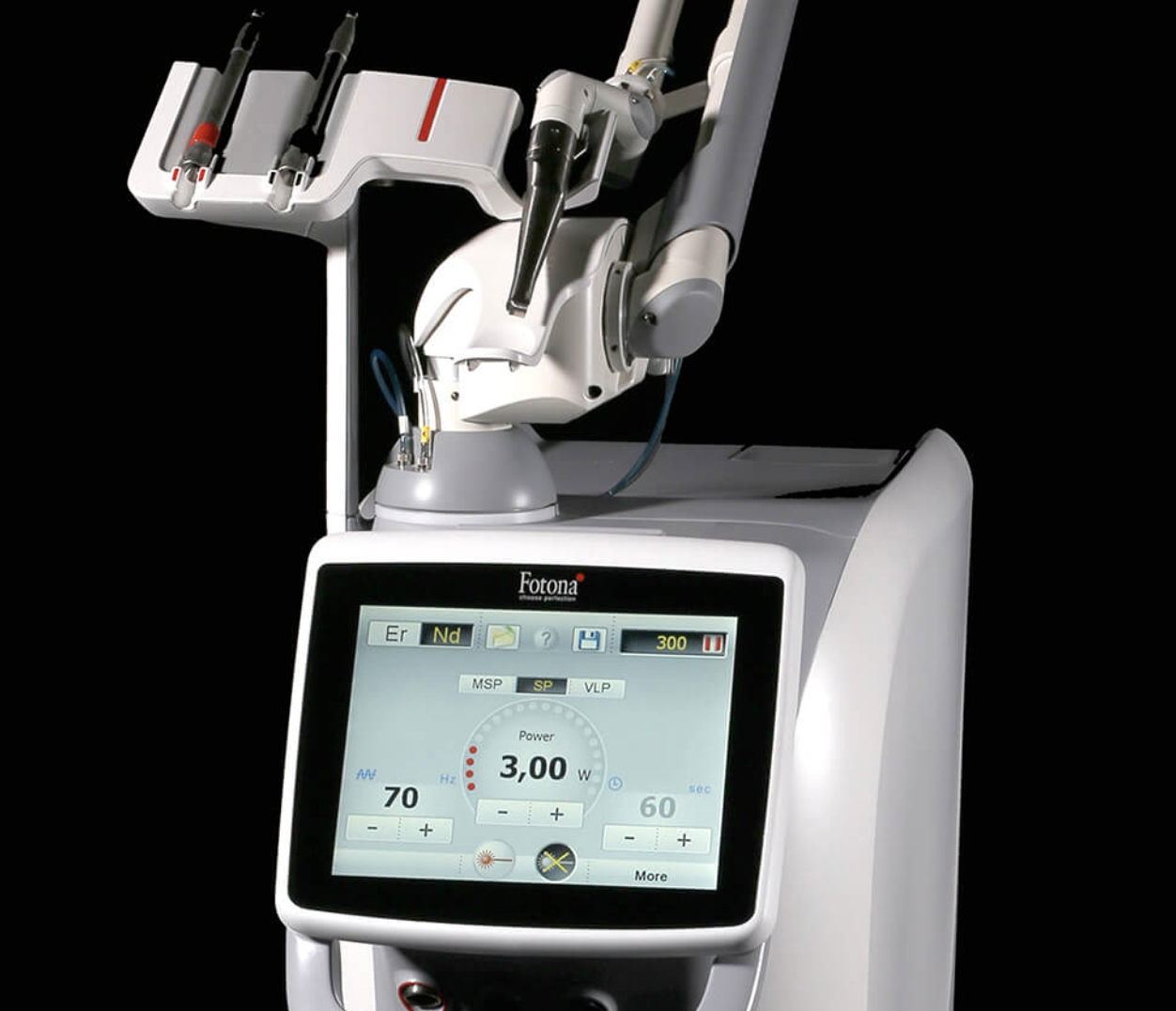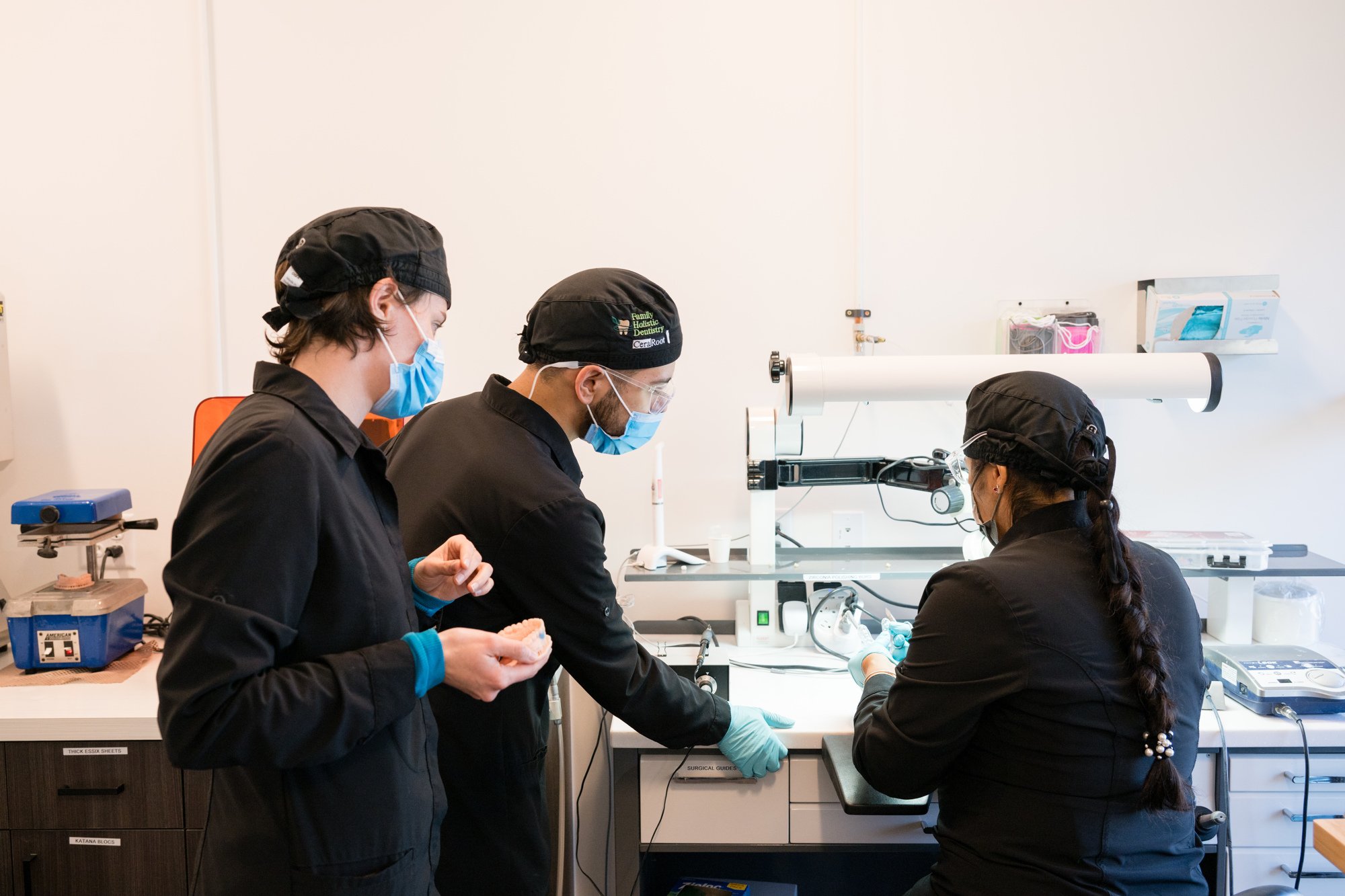
Technology
Choosing a dental practice that embraces state-of-the-art technology can help ensure that you receive the best possible care for your oral health needs.
The advanced equipment and tools can aid in accurate diagnosis, efficient treatment, and better patient experience.
With the help of advanced imaging techniques, dentists can identify dental issues at an early stage, which can prevent more serious problems in the future.
Modern equipment can provide more precise and less invasive procedures, leading to faster recovery times and decreased discomfort for patients.
CBCT: Cone Beam Computed Tomography
CBCT provides a comprehensive 3-D digital image of the teeth and jaw. It is useful for diagnosing complex dental conditions and is faster, safer, and more comfortable than a medical CT scan.
The CBCT significantly enhances our diagnostic capabilities because we can see the mouth in 3D.
This means we can see if there is an infection that we might not be able to see with a regular sensor. Additionally, we can evaluate the jawbone, teeth, airway, and surrounding tissues with exceptional clarity. In addition to these diagnostic benefits, CBCT’s precise imaging is essential for accurate dental implant placement. We can ensure optimal alignment and integration with the jawbone. This accuracy reduces surgical risks and enhances treatment outcomes.
Cerec
We use our CEREC machine to offer same-day crowns. Dr Browns gives a summary of the technology and how we use it.
Lasers
We have four lasers in the office. They bio-simulate, disinfect, cut, and promote healing. The Fotona laser has an erbium yag and nd:yag, which has many uses.
Lasers in dentistry offer significant advantages, enhancing patient comfort and procedural precision.
They allow for minimally invasive treatments, reducing the need for anesthesia and minimizing bleeding and swelling. This leads to quicker recovery times. Lasers are also highly effective in sterilizing treatment areas, lowering the risk of infections. Their precision improves the outcomes of various dental procedures, including tooth decay removal, gum reshaping, and whitening treatments.
“A dental practice that embraces state-of-the-art technology can provide patients with numerous benefits. Advanced equipment and tools can aid in accurate diagnosis, efficient treatment, and a better overall experience. With the help of modern imaging techniques, dentists can identify dental issues at an early stage, which can prevent more serious problems in the future. Additionally, precise procedures with modern equipment can lead to faster recovery and less discomfort.”
PRF Centrifuge
A PRF (Platelet-Rich Fibrin) centrifuge concentrates platelets, growth factors, and fibrin from a patient's blood sample.
PRF can dramatically decrease swelling and discomfort following any surgical treatment. It stimulates the production and retention of gum tissue volume and jawbone density.
A PRF membrane is produced from a patient's blood cells and placed in our centrifuge with nothing added, so it is very safe. Read about our Experiences with PRF
The Wand
The Wand® delivers gentle, precise dental anesthesia using computer control for a virtually painless, stress-free experience.
The Wand® is a computer-assisted dental anesthesia system that delivers precise, virtually painless numbing.
By controlling the flow rate and pressure of anesthetic, it eliminates the sting associated with traditional injections. Its ergonomic, pen-like design enhances comfort and accuracy, making dental treatments smoother and more relaxing for patients of all ages. See our blog post for more information.
Piezosurgery
Piezosurgery involves using ultrasound waves to cut into bone. We have a piezosurgery unit in our office.
Piezosurgery is a more gentle and noninvasive procedure that uses ultrasound waves to cut into bone.
We then apply gentle pressure at key points, using leverage instead of brute force. The ultrasound waves are designed not to damage surrounding tissue, giving Piezosurgery its distinct advantage. Maintaining the bone between the roots (inter-radicular bone) increases the chances of placing a ceramic implant immediately after extraction.
Piezosurgery ensures more comfort during an extraction because no strong force is applied.
Ozone Generator
We have three ozone generators in our office.
Ozone is an excellent disinfectant, and dealing with infections is a big part of dentistry. In 2017, I asked Dr. Phil Mollica, a long-time speaker on ozone in dentistry, about ozone.
“I can’t say enough good things about this practice. Friendly and highly educated people, state-of-the-art technology, and a holistic mindset. I went to several dentists in the area before settling on this practice and so glad I went through the process to find them.”
Digital Impressions
Digital impressions are more accurate and more convenient. The patient doesn't have to have unpleasant impression materials in their mouth.
In-House Dental Lab
We have an in-house dental lab to make implant crowns, bridges, and surgical guides. We use Cerec for our same-day crowns.
Having an in-house lab allows us to control the turnaround time for our restorations and offer better service.
Current CAD/CAM technology and digital impressions have simplified the production process to deliver high-quality restorations. Bringing this process in-house is better for our patients and us because we have control of the delivery process. We have a state-of-the-art milling machine and furnace to mill the crowns. We trained a local artist, Nikki, to stain the crowns and match the color. She has an excellent eye and does beautiful work. We use exocad to design the restoration and have CeraRoot for support if we have any questions.
Dentin Grinder
Our FDA approved Dentin Grinder converts extracted teeth into high-quality autologous (from your own body) dentin graft in minutes for predictable bone regeneration.
The Smart Dentin Grinder by KometaBio transforms an extracted tooth into a biocompatible graft within minutes.
After cleaning and drying, the tooth is ground into uniform particles, then demineralized in a proprietary solution. The resulting dentin graft—rich in growth factors—is immediately placed in the surgical site, promoting rapid bone regeneration and natural healing.
Alpha-Stim
We use Alpha-Stim to promote relaxation and reduce anxiety during dental procedures.
This FDA-cleared, non-invasive technology regulates brain activity and can relieve pain through Microcurrent Electrical Therapy (MET). Read Product Overview
